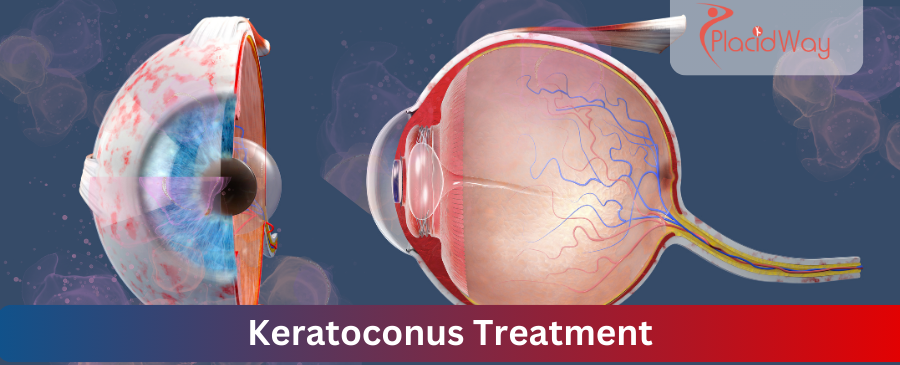
Table of Content
Keratoconus is a progressive eye disease in which the normally round cornea thins and begins to bulge into a cone-like shape. This cone shape deflects light as it enters the eye on its way to the light-sensitive retina, causing distorted vision. Typically, keratoconus begins in the teenage years or early twenties and can affect one or both eyes. The progression can be unpredictable, with the condition stabilizing after a few years or continuing to progress over time. Treatments for keratoconus are aimed at improving vision and preventing further deterioration of the cornea.
| Treatment | Description | Availability |
|---|---|---|
| Corneal Cross-Linking | Strengthens corneal tissue to halt bulging of the eye's surface. | Widely available |
| Intracorneal Ring Segments | Inserts are placed in the cornea to reshape the eye's front surface. | Select countries |
| Corneal Transplant | Replaces part of the cornea with corneal tissue from a donor. | Widely available |
| Procedure | Steps | Duration |
|---|---|---|
| Corneal Cross-Linking | Application of riboflavin solution followed by controlled UV light exposure. | 1-2 hours |
| Intracorneal Ring Segments | Small incisions made in the cornea to insert the segments. | 30-60 minutes |
| Corneal Transplant | Removal of the damaged cornea and replacement with donor tissue. | 1-2 hours |
| Country | Cost |
|---|---|
| Mexico | $2,000-$4,000 |
| Turkey | $1,500-$3,500 |
| Thailand | $1,800-$4,200 |
| Colombia | $2,000-$3,800 |
| India | $1,000-$3,000 |
| Austria | $3,000-$5,000 |
| USA | $5,000-$10,000 |
| UK | $4,000-$9,000 |
Find Prices for Keratoconus Treatment Near You
Without insurance, the cost of keratoconus treatment can range widely depending on the type of treatment and the country where it is performed. Generally, prices can vary from $1,000 to $10,000.
The success rate of keratoconus treatment varies by the type of procedure but is generally high, with many patients experiencing significant improvements in vision.
Recovery periods vary: corneal cross-linking might require several days to weeks, while recovery from a corneal transplant could take up to several months.
Yes, non-surgical options such as specialized contact lenses can help manage mild to moderate keratoconus by improving vision.
Treatments like corneal cross-linking are designed to halt the progression of keratoconus, potentially preventing further vision deterioration.
Explore top destinations and accredited clinics for keratoconus treatment abroad. Benefit from advanced treatments at competitive prices, and experience personalized care tailored to your needs. Start your journey to better vision today!
Laser Eye Surgery, LASIK Eye Surgery Abroad